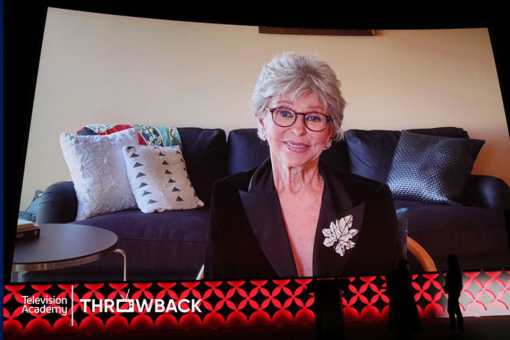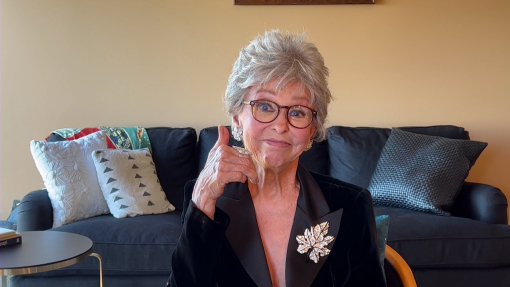In 1967, as assistant to the national programming director at ABC, Michael Eisner was asked to produce a show that no one else wanted to do — a special about Marine World, a small theme park south of San Francisco. He recruited Bing Crosby, who was still under contract with the network, and the singing group the Rascals, and made Feelin’ Groovy at Marine World, a one-hour special that not only racked up ratings but garnered Eisner a rep as the go-to guy for unpopular jobs.
Two years later, as director of program development for ABC on the East Coast, Eisner again demonstrated his talent for spotting potential and seizing an opportunity when he accepted the job running daytime and Saturday morning children’s programming. By adding educational kids’ shows like the animated musical Schoolhouse Rock! as well as commercial hits such as The Jackson 5ive cartoon series, the young executive helped ABC move from third to first place among the three broadcast networks.
“I liked going into the uncontested territories within the company where I could have a lot of freedom,” says Eisner. “I would go into the areas that weren’t working, where the worst that could happen was they improved because they couldn’t fall any farther down.”
During the next decade, Eisner held one job after another at the network — he jokes that he occupied every office on the 37th floor at ABC headquarters in New York — and built his resume as a creative programming executive with a drive to champion projects he believed in. Starting in 1964 as assistant to then national programming director Leonard Goldberg, the Denison University graduate who was first smitten with television while working as a page for NBC during his junior and senior years in college, climbed the proverbial ladder. As ABC’s vice president for daytime programming, he promoted the popular soap operas All My Children and One Life to Live. When he moved to primetime, he fostered hits such as the ABC Movie of the Week, Starsky and Hutch, Welcome Back, Kotter, and Happy Days, which he and then-ABC executive Barry Diller lobbied hard for despite the research department’s contention that viewers weren’t interested in the nostalgia of the ’50s.
Producer Garry Marshall recalls that Eisner was intent on getting Happy Days on the air despite negative response from the network honchos. Under Eisner’s direction, Marshall had made the show’s first pilot, which didn’t feature Henry Winkler as Arthur “Fonzie” Fonzarelli. “Nobody bought it, and we put it on the shelf,” he says. But Eisner never lost interest, and when the success of the musical Grease and the film American Graffiti ignited the public’s interest in the ’50s, he recognized it was the right cultural moment to strike with the nostalgic series. They added Winkler to the cast and aired the pilot.
“We saw how people reacted to The Fonz, and we took it from one camera to three and shot it in front of an audience,” says Eisner. “It exploded.”
Enthusiasm, creativity, hard work and what his former boss and longtime friend Barry Diller calls a “childlike” quality — these are the enduring traits that have guided Eisner from his very first TV job as an FCC logging clerk at NBC in 1964, to ABC, Paramount Pictures, and finally the Walt Disney Company, where he presided as chairman and chief executive for 21 years.
“Michael’s creative vision has influenced a multitude of mediums, including television,” says Diller, who lured his protege to Paramount as president and CEO in 1976. “He understands what makes great content, what people will respond to, and the constant need to push for excellence — and he used that insight to help Disney create some of the most memorable entertainment experiences in the world.”
“He always knew what he wanted. He was never indecisive,” recalls Marshall, who created Happy Days sitcom spin-offs Laverne & Shirley and Mork & Mindy under Eisner’s aegis. “Sometimes he got a little obsessive, but that’s what made him successful. He wasn’t a by-the-book executive, but flew by the seat of his pants.”
Former television executive Fred Silverman recalls that in 1976, when he suggested to Eisner that there might be spin-off potential for the hit The Six-Million Dollar Man after a guest appearance by Lindsay Wagner drove ratings up, Eisner ran with the ball. “From the moment I said that to Michael until the new show The Bionic Woman went on the air was about four months. He got Lindsay signed and moved fast and aggressively. That was how he operated.”
Today, the man who went on to transform Disney from a $1.8 billion film and theme park company into an $80 billion media and entertainment behemoth operates pretty much the same way he did when he was an upstart television executive. After stepping down from Disney in 2005, Eisner forged enthusiastically into the digital frontier, developing ways to channel entertainment through new platforms. He founded the Tornante Company, which invests in and develops media companies, and created Vuguru, an independent studio that develops and finances content for digital and emerging platforms. Vuguru’s first production, Prom Queen, quickly became an internet sensation, and a year and a half ago the company signed a deal with AOL to develop and produce original scripted series for distribution by AOL.
“I like the idea of taking something from whole cloth that started off as an idea and ending up with entertainment enjoyed by many people,” says Eisner. “That’s what I like about what I do, and what helps me do it well. I actually enjoy it more than spreadsheets or analyst meetings or the like.”
From his second-story window at Tornante’s offices in Beverly Hills, the former Disney executive looks down on the bustling street life of Beverly Drive, shoppers, mothers pushing strollers and coffee drinkers congregating at the Coffee Bean & Tea Leaf below. His office, filled with works by such artists as Salvador Dali hanging on the wall behind his desk, is considerably less corporate than the digs he occupied for decades on the Disney lot. But while the view may have changed, in many ways his perspective has not, and Eisner still believes wholeheartedly in the creative mission statement he wrote early in his career: content rules, and good storytelling is at the heart of entertainment, whether it is delivered on a large or small screen, through a computer, an iPad or mobile phone.
“Every day I change my mind about the future as far as distribution,” says Eisner, looking fit in a navy-blue suit and tie with black running shoes (by the way, he drives a Chevy Volt electric car). “But strength is in the content, and always has been. The cliché that content is king is still true. There are moments in time when distributors try to take over the throne, but at the end of the day, they’re overthrown. The real strength in all entertainment businesses is the content.”
It is this fundamental belief that has driven some of Eisner’s most stunning business achievements. As president of Paramount Pictures from 1976 to 1984, he turned out hits such as Raiders of the Lost Ark, Saturday Night Fever, Grease, and Terms of Endearment, leading the studio to be number one in box office and profitability in both theatrical movies and network television production. In 1995, Eisner changed the course of global entertainment when, as the head of Disney, he orchestrated the purchase of his old alma mater, Capital Cities/ABC, for $19 billion. With this single strategic move, the studio acquired a treasure trove of holdings, including the ABC network and TV stations and 80 percent of the sports network ESPN. The success of the sports cable channel provided the company with so much leverage over the entire cable industry that, in 2004, Disney earned a record $1.94 billion in bottom-line operating income from its cable channels alone.
Mega-dealmaking aside, however, Eisner still sees himself first as a “creative editor of various different parts of the entertainment business.” He enjoys, “seeing projects, then deciding which ones are for me, or would be advantageous to the company, working with writers and producers, encouraging, cheerleading, criticizing, weighing in and moving toward excellence in the products.”
An iconic businessman whose successes and failures have been amply recorded, Eisner has no intention of resting on his achievements, or the considerable fortune he amassed during his Disney years. “Laurels are ephemeral,” he says. “If you rest on some pristine vision of life and the past, you pretty much atrophy. Survival is about being engaged.”
Toward that end, Eisner has expanded his personal resume into some unexpected projects: he hosted his own business and entertainment interview program, Conversations with Michael Eisner, on the CNBC cable network, and shared ideas about collaborative partnerships in his 2010 book, Working Together: Why Great Partnerships Succeed.
At a time when most executives who made their names in conventional media are packing it in, Eisner manages to extend his own personal brand (“I am a theme guy,” he says) in new media and technologies while abiding by the basic values that contributed to his success. “In many ways, entertainment hasn’t changed in 5,000 years,” he muses. “It’s about making people laugh and cry. You always have a better story if you have a beginning, middle and end.”
This tribute originally appeared in the Television Academy Hall of Fame program celebrating Michael Eisner’s induction in 2012.












